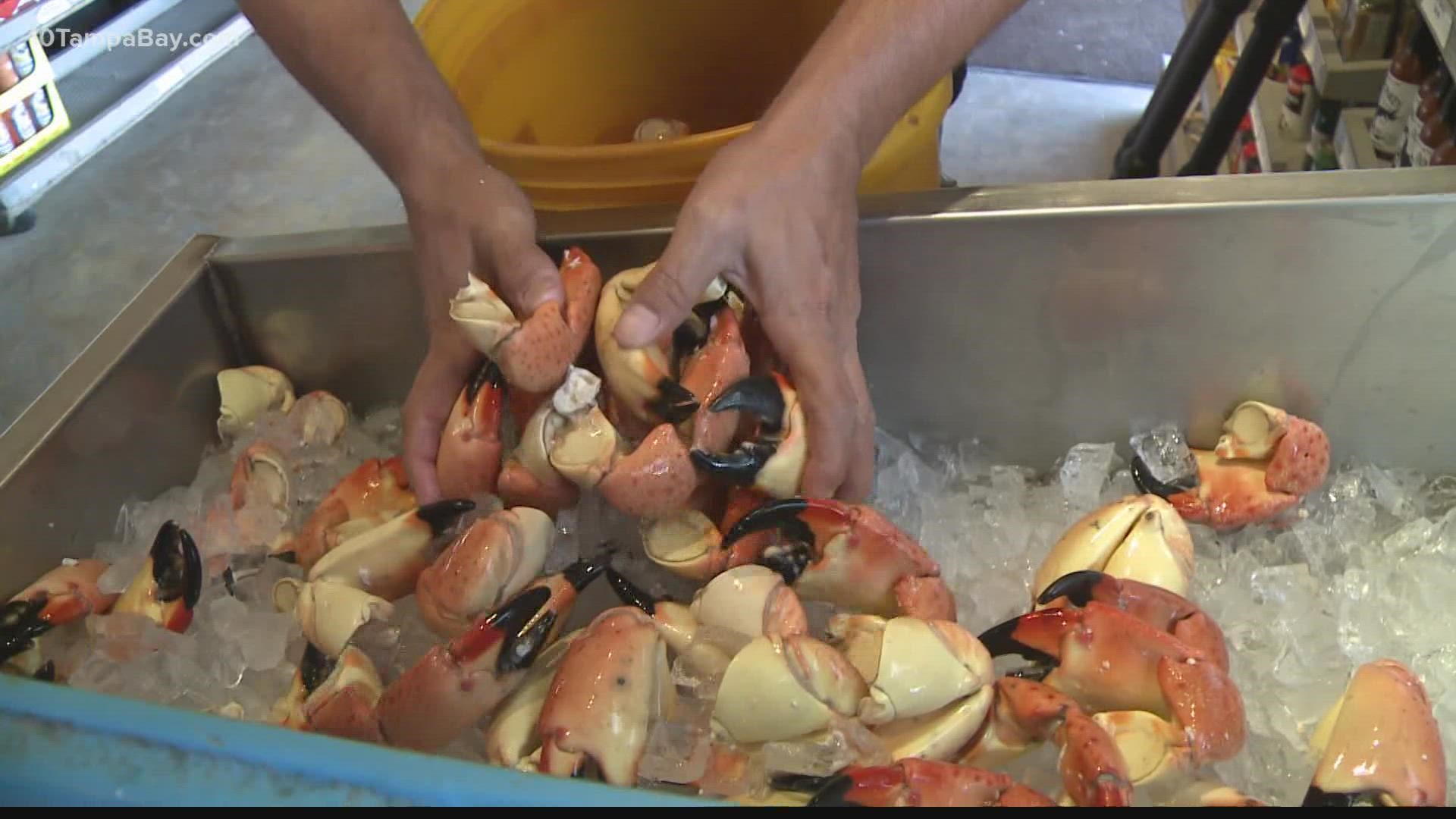ST. PETERSBURG, Fla — If you're into stone crab claws, you're in luck. Harvest season just began.
Beginning Oct. 15 until May 1, recreational fishers can trap and catch stone crab claws that are at least 2 and 7/8 inches, the Florida Fish and Wildlife Conservation Commission (FWC) says. Remember, only claws can be harvested.
In order to participate in recreational trapping, fishers 16 and older need to complete an online, no-cost recreational stone or blue crab trap registration, the FWC says.
The online form can be found at GoOutdoorsFlorida.com. You must have an account, then add the stone crab trap registration to your fishing license.
Each person who is registered to trap stone crabs will have a unique trap registration number. The no-cost registration allows FWC to collect information for future harvests.
Fishers should know there's a daily bag limit. It allows for one gallon of claws person per person or two gallons per vessel, whichever is less, FWC says.
Those who plan to harvest stone crab claws are only allowed to use the stone crab trap, dip or landing net. See the specific requirements for stone crab traps here.
Illegal gear that is not permitted includes any device that could puncture, crush or injure the crab body. That means spears, grains, grabs or hooks.
FWC encourages fishermen to harvest one claw from a stone crab, however, it is legal to harvest both claws.
"Although it is currently lawful to harvest both of a stone crab's claws, this practice leaves the stone crab with few alternatives to defend itself from predators," FWC says.
"Although the crab can still obtain minimal amounts of food with no claws, having one claw (if the other one is harvested) will enable the crab to obtain greater amounts of food in a shorter amount of time. Stone crabs (like other crustaceans) have the ability to grow back their claws, but this process requires a large amount of energy in the form of food."

